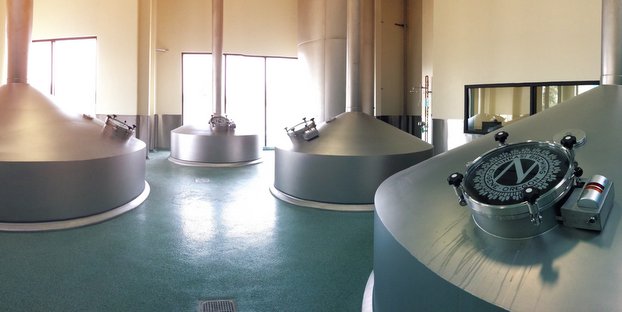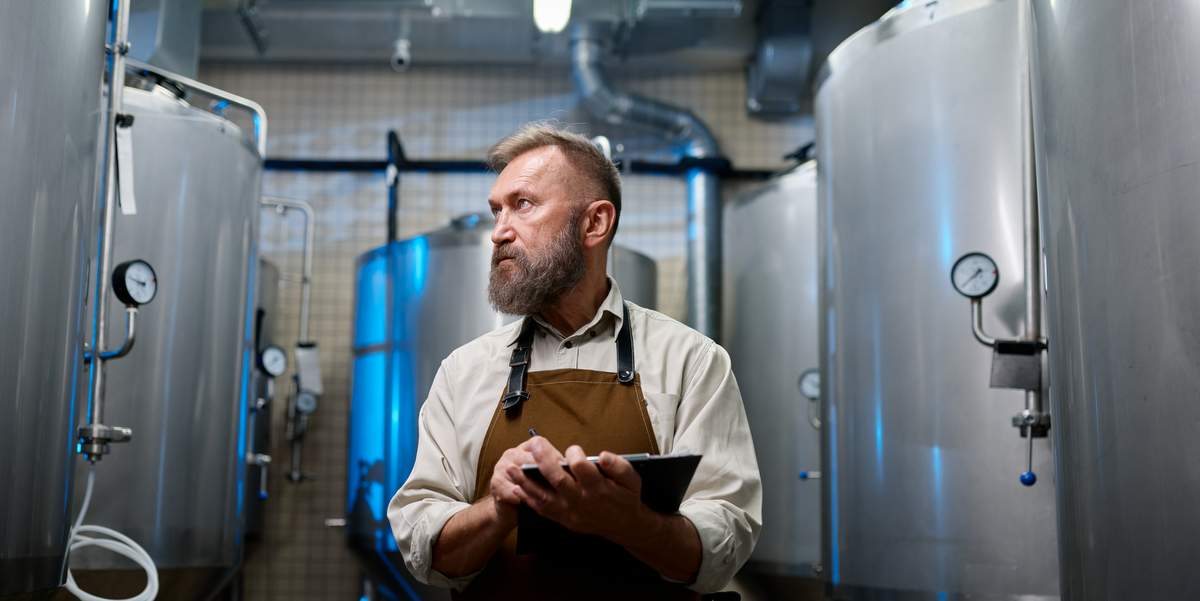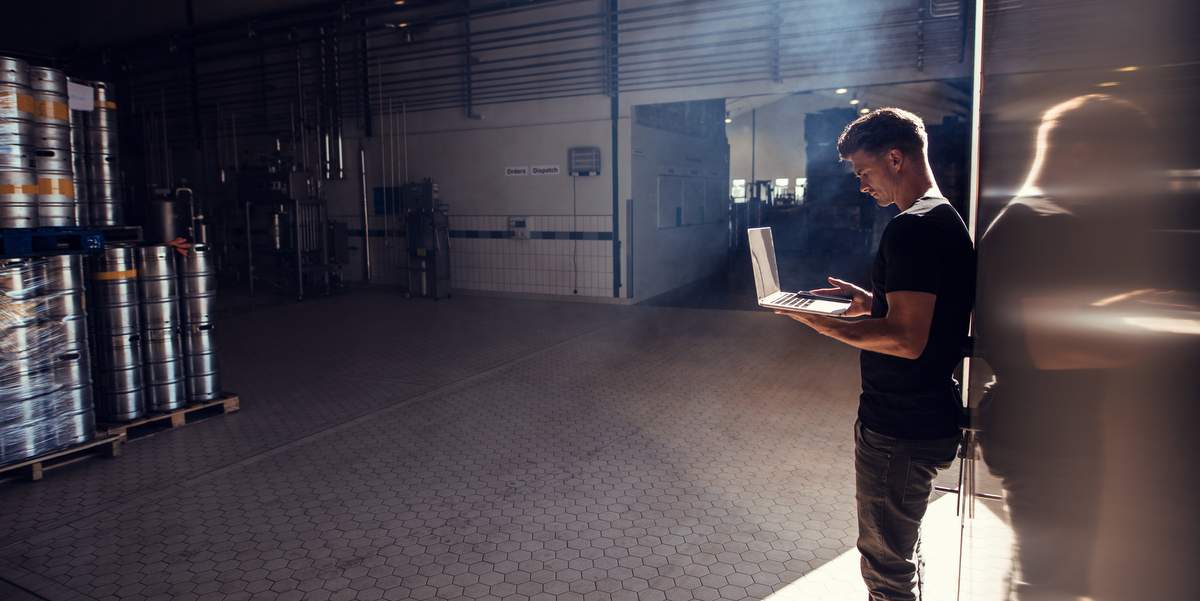
The proper equipment selection and usage can make or break your brewing business. From productive, burly brewhouses to automated packaging systems, there is no shortage of equipment options for your growing craft brewery. In 2014, Craft Brewing Business took stock of all the latest and greatest brewing equipment and systems to outfit your establishment. We talked about production-boosting conveying equipment. We covered the most important safety and maintenance tips. We even got great equipment insight from established, successful craft brewers. I could go on all day, or you could take a look below to check out the biggest equipment and systems-focused features from 2014.
Packaging Equipment Reviewed: Conveying systems and accumulation tables
Getting beer to bottle is not as easy as it seems. Automated packaging requires transit — conveying, merging, diverting, picking, placing, transferring, orienting, stacking and every other gerund in between. As craft breweries grow, their bottling, canning and packaging lines will become interconnected chains of automated systems ranging from filling lines and labelers to bottle conveyors and case erectors. To brewers themselves, the automation of the packaging process can look a little like an ultra-complex Rube Goldberg Machine.
10 brewhouse maintenance and safety tips from craft professionals
Brewing is an art. We’ll grant you that, but the business of brewing is more of a science, requiring specialized ingredients, exacting temperatures, well-maintained machinery, caustic chemicals and utmost safety. The brewhouse is a veritable warehouse full of specialized equipment and systems — from mills and mashing tuns to kettles and fermenting tanks. For a craft brewery to be successful, these many vessels need to be maintained and run properly and safely by a well-educated staff of employees. Because the scholarship of brewing is a constant journey, we decided to tap the big brains of top craft brewers and top brewhouse manufacturers and suppliers. We asked them to share their advice for safety and maintenance in the brewhouse, and the nuggets of wisdom below are the result. We raise a big pint of thanks to everyone who participated.
Ninkasi Brewing Co. starts brewing with GEA brewhouse that boasts higher-level of sustainability
Currently, Ninkasi’s 55-barrel brewhouse has a capacity to produce 90,000 barrels (bbls) of beer per year. With a second, 90-bbl brewing system installed across the street in Eugene’s Whiteaker neighborhood, the brewery will be able to add an initial 70,000 bbls of capacity with room to grow to 250,000. Perhaps what is equally exciting for the brewery is its gained ability to produce a wider variety of beers with longer fermentation times.
Automated craft beer packaging: Boulevard Brewing case study
Growing craft breweries need to straddle a line between their local heritage and a modern, scalable, nationwide operation. Each batch requires care and a hands-on approach for even the largest craft brewer. Maintaining that ethos while also producing and moving enough brew to enter five states, and then 10 states, and then 25 states and so on is a delicate equation. Successful craft brewers know that the best way to achieve this is by identifying areas of the process that can be streamlined or automated — without detracting from taste, experience or concept.
A ‘Case’ Study: Southern Tier Brewing capitalizes on a Standard-Knapp case packer
When the Southern Tier team found that the case packer in the new brewing facility couldn’t keep up with their growth, they looked for new equipment that could help them keep up with both existing demand and anticipated future expansion. They eventually selected the 939EZ Versatron Case Packer, supplied by Standard-Knapp, a new model specifically developed to combine proven and reliable case packing technology in a much more affordable package. After installing the new packer, Southern Tier has been able to increase its production by 30 percent, reduce changeover time between bottle sizes and, perhaps most importantly, maintain the product quality that its loyal fans have come to expect.
How automatic yeast pitching rate control can improve your beer quality
The real stars of the craft brewing industry are the ingredients. Craft enthusiasts grab the latest offering from their favorite brewery or a newcomer off the shelf and immediately check the label. What’s in this? What’s special about it? Invariably they’ll get some facts or maybe some prose about the hops and malts used to create that batch. But what about the yeast?
10 packaging tips from famous craft brewers and expert manufacturers
The science of commercial beer goes beyond the chemistry of brewing. The process of packaging it is an equally impressive engineering feat, requiring bottling, canning, kegging, labeling, sorting, accumulating, boxing, palletizing, shipping and so much more in between. Visit a packaging and distribution center at a brewery like New Belgium Brewing Co. and the automation of the packaging process can look a little like an ultra-complex Rube Goldberg Machine.
Wastewater basics for a growing craft brewery
Depending on where you are, wastewater emanating from your brewery can be a non-issue or it can be a major deal-killer type of problem. That’s quite the variation, and it’s true. You will sleep better and have fewer headaches if you are lucky enough to fall in the non-issue end of the spectrum, but not everyone is so blessed. This article will provide a little of bit of insight in to the wonderful world of brewery wastewater and what to do with it.
Brewhouse advice from top craft brewers and equipment manufacturers
Every brewhouse should be a palace of production, safety and innovation. The brewhouse is the heart and engine of your brewing business, and its many complex systems and operations (from mills and mashing tuns to kettles and fermenting tanks) require constant vigilance, maintenance and safety. The journey to the perfect brewhouse and brew crew is a long road rife with big decisions. What’s the size of your system, space available, desired flavor impacts, heating time and, of course, ease of cleanliness using the right chemicals at the right frequency? There are so many questions. What will be the heating source for your kettle or hot liquor tank, or do you have a Lock Out, Tag Out Program to help workers avoid getting hurt when machinery is being serviced?





David Lengvarsky liked this on Facebook.
Joël Back liked this on Facebook.
Gregory Evantash liked this on Facebook.
Lee Yunyong liked this on Facebook.
Scott Davidson liked this on Facebook.
Augusta Label liked this on Facebook.
Shade Tree Beer Brewers liked this on Facebook.